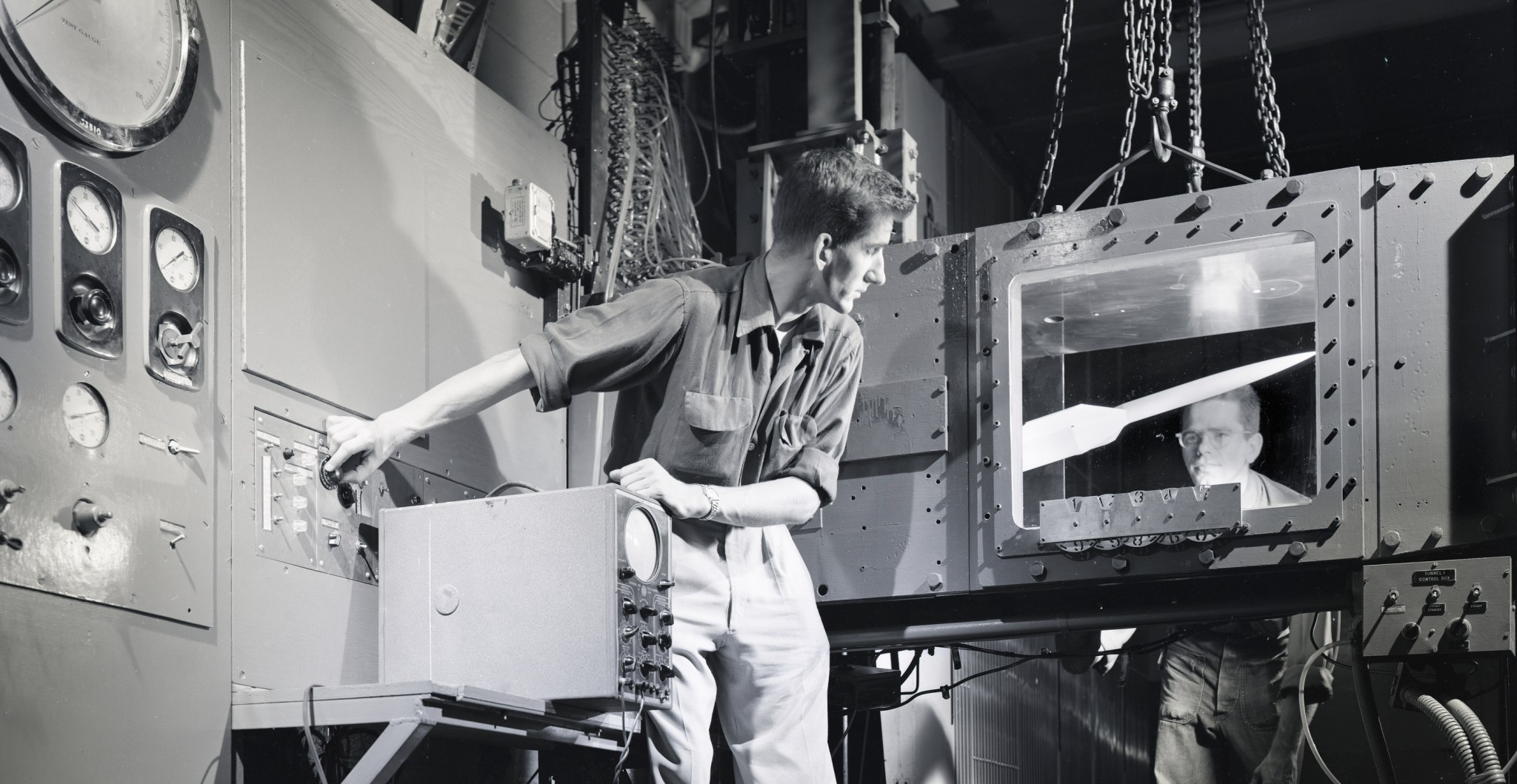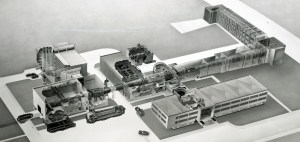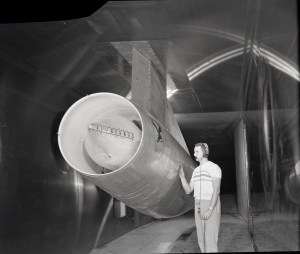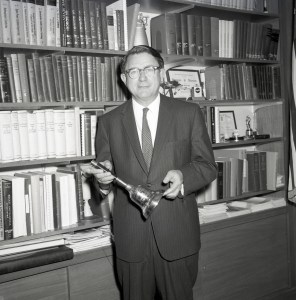When jet propulsion and guided missiles during the World War II era revealed the possibilities of high-speed supersonic flight, the National Advisory Committee for Aeronautics (NACA) worked quickly to acquire the tools to explore this new technology.
In June 1945, the Aircraft Engine Research Laboratory in Cleveland, now NASA Glenn, activated its first supersonic wind tunnel to study designs related to engine inlets and nozzles. It was the first of three small, vertically-aligned supersonic wind tunnels that were collectively referred to as the “Stack Tunnels.”
The small supersonic tunnels provided an alternative research platform to the much larger Altitude Wind Tunnel (AWT), which had the unique ability to test full-scale engines at subsonic speeds in simulated altitude conditions.
In early 1945, Abe Silverstein, head of the AWT, began devising a supersonic wind tunnel. Because the AWT only ran during the night, its powerful exhauster equipment sat idle most of the day. Silverstein’s design utilized the exhausters during the day to create a Mach 1.91 flow through an 18-square-inch-diameter open-circuit tunnel just outside the AWT’s southwest corner.
The use of existing air handling equipment expedited the construction, and the new facility was completed in only 90 days.
George Lewis, NACA director of research, said, “The new supersonic propulsion research wind tunnel provides the only means we have of determining what the requirements are for the design and operation of these new propulsion plants at the high speeds for which they seem most promising.”
The second Stack Tunnel, whose 24- by 24-inch test section was added in 1949, could generate air flows up to Mach 3.96. A third tunnel, with an 18- by 18-inch test section, began operating in 1951 with speeds up to Mach 3.05.
Although small in size, these tunnels produced valuable data on high-speed aerodynamics. NACA engineers used them extensively throughout the 1940s and 1950s to study the aerodynamic characteristics of supersonic inlets and diffusers, to test a subscale supersonic ramjet and verify the thin wing aerodynamic theory.
Meanwhile, Silverstein and a team of engineers designed the large 8- by 6-Foot Supersonic Wind Tunnel. This facility, which began testing in 1949, became the most significant of the NACA’s postwar supersonic wind tunnels. The small supersonic tunnels, however, provided NACA researchers an important bridge to the supersonic arena.
Top Image: In 1957, NACA researchers adjusted an experimental aircraft model in the original 18-by 18-inch, small supersonic wind tunnel. The facility could test the model at speeds three-and-a-half times the speed of sound.
Robert S. Arrighi
NASA’s Glenn Research Center




































